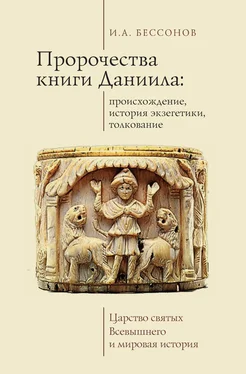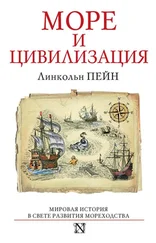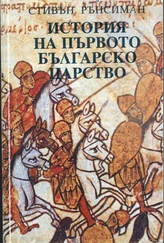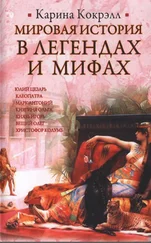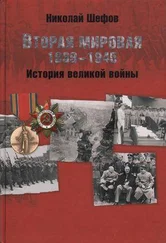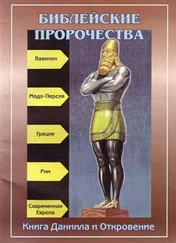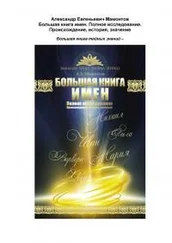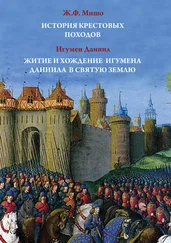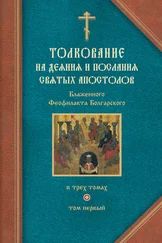Hartman Louis F., A. Di Lella Alexander A. The Book ofDaniel. New York, 1980. P. 144– 145; Newsom Carol A. with Breed Brennan W. Op. cit. P. 70.
Newsom Carol A. with Breed Brennan W. Op. cit. P. 73-74.
Collins John J. Op. cit. P. 161.
Breasted James Henry. Ancient Records ofEgypt. The Nineteenth Dynasty. Urbana-Chicago, 2001. P. 245.
Цит. по Ancient Near Eastern Texts Relating to the Old Testament. Princeton, 1969. P. 313; сокращенный русский перевод см. Хрестоматия по истории Древнего Востока. Т.2. М., 1980. С. 21–22.
Подробнее см. McNamara Martin. Nabonidus and the Book of Daniel // Irish Theological Quarterly. Vol. 37. 1970. P. 131–149.
Bentzen Aage. Daniel. Tübingen, 1952; Hengel Martin. Judaism and Hellenism. Studies in their Encounter in Palestine during the Early Hellenistic Period. Eugene, 2003. P. 182.
West M.L. The East Face ofHelicon. West Asiatic Elements in Greek Poetry and Myth. Oxford, 2003; Feldman Louis H. Judaism and Hellenism Reconsidered. Leiden-Boston, 2006. P. 49– 50.
West M.L. Op. cit. P. 312–319.
В Бахман Яште говорится, что в это время будут править «дэвы со взъерошенными волосами», которых исследователи обычно отождествляют с македонцами (Eddy S.K. The King is Dead. Eastern Resistance to Hellenism, 334–31 B.C. Lincoln, 1961).
Collins John J. Op. cit. P. 166–170.
Впервые эта идея была выдвинута в работе Eerdmans B.D. Origin and Meaning of the Aramaic Part ofDaniel // Actes du XVIIIe congrès international des orientalistes (1932). P. 198– 202. Cм. также Davies Philip R. Daniel Chapter Two // The Journal of Theological Studies. Vol. 27. No 2. (October 1976). P. 392–401; Fröhlich Ida. Time and Times and Half a Time. Historical Consciousness in the Jewish Literature of the Persian and Hellenistic Eras. Sheffield, 1996. P. 1 1–48.
Fröhlich Ida. Op. cit. P. 28.
Op. cit. P. 26–27.
Fröhlich Ida. Op. cit. P. 28–34.
Seow C.L. From Mountain to Mountain: The Reign of God in Daniel 2 // A God So Near. Essays on Old Testament Theology. Winona Lake, 2003. P. 355–374.
Willis Amy C. Merrill. Dissonance and the Drama ofDivine Sovereignty in the Book of Daniel. New York-London, 2010. P. 37–38.
Kruschwitz Robert B. and Redditt Paul L. Nebuchadnezzar as the Head of Gold: Politics and History in the Theology of the Book of Daniel // Perspectives in Religious Studies, 24 (1997). P. 402.
Hartman Louis F., A. Di Lella Alexander. Op. cit. P. 143; Collins John J. Op. cit. P. 169; Newsom Carol A. with Breed Brennan W. Op. cit. P. 77–80.
Collins John J. Op. cit. P. 169. См. также Collins John J., The Apocalyptic Vision ofthe Book of Daniel. Missoula, 1977. P. 43–44.
Collins John J. A Commentary on the Book of Daniel. Minneapolis, 1993. P. 165.
Newsom Carol A. with Breed Brennan W. Op. cit. P. 77.
Collins John J. Op. cit. P. 171.
Синодальный перевод относит указания на Царство и всеобщее служение к Всевышнему; мы, в соответствии с мнением большинства современных комментаторов, относим их к «народу святых Всевышнего».
Gunkel H. Schöpfung und Chaos in Urzeit und Endzeit. Göttingen, 1895. S. 323–335.
Kraeling E.G.H. Some Babylonian and Iranian Mythology in the Seventh Chapter ofDaniel // Oriental Studies in honour ofCursetji Erachji Pavry. London, 1933. P. 228–31.
Heaton Eric William. The Book ofDaniel: Introduction and Commentary. London, 1956. P. 175.
Gardner Anne E. Daniel 7, 2–14: Another Look at its Mythic Pattern // Biblica. Vol. 82, No. 2 (2001). P. 244–252.
Bentzen Aage. King and Messiah. London, 1955. P. 74–75.
Emerton J.A. The Origin of the Son ofMan Imagery // The Journal of Theological Studies. 9 (1958). P. 239–240.
Collins John J. Op. cit. P. 287.
Mosca Paul G. Ugarit and Daniel 7: A Missing Link // Biblica. Vol. 67 (1986). P. 496–517.
Walton John. The Anzu Myth as Relevant Background for Daniel 7? // The Book of Daniel. Composition and Reception. Vol 1. Boston-Leiden, 2002. P. 69–90.
Mowinkel Siegmund. Das Thronbesteigungsfest Jahwäs und der Ursprung der Eschatologie. Kristiania, 1922.
Emerton J.A. Op. cit.
Bentzen Aage. Op. cit.
В данном разделе мы ограничиваемся только наиболее важными для нашего исседования разделами историографии. Наиболее полную историографию исследований Дан 7 в XIXXX веках можно найти в работе: Eggler Jürg. Influences and Traditions Underlying the Vision ofDaniel 7:2–14: The Research History from the End ofthe 19th Century to the Present. Fribourg- Göttingen, 2000.
Такую позицию мы находим в работах Ди Леллы (Hartmann Louis F., Di Lella Alexander A. Op. cit. P. 87–89), Ферча (Ferch Arthur J. The Apocalyptic «Son of Man» in Daniel 7. Andrews University Seminary Doctoral Dissertation Series 6. Berrien Springs, 1979. P. 73–77) и ряда других исследователей.
Gardner Anne E. Op. cit.
Pongratz-Leisten Beate. Religion and Ideology in Assyria. Boston-Berlin, 2015. P. 428.
Strootman Rolf. Courts and Elites in the Hellenistic Empires: The Near East After the Achaemenids, c. 330 to 30 BCE. Edinburgh, 2014. P. 227.
Collins John J. Op. cit. P. 290.
Ferch Arthur J. Op. cit. P. 73–77; Gardner Anne E. Op. cit. P. 244–246.
Lacocque Andre. Allusions to Creation in Daniel 7 // The Book ofDaniel. Composition and Reception. Vol 1. Boston-Leiden, 2002. P.127–128.
Collins John J. Op. cit. P. 289.
Kratz Reinard G. The Visions ofDaniel // The Book ofDaniel. Composition and Reception. Vol 1. Boston-Leiden, 2002. P. 95–96.
См. Staub Urs. Das Tier mit den Hörnern: Ein Beitrag zu Dan 7, 7f” // Freiburger Zeitschrift für Philosophie und Theologie 25 (1978). S. 354.
Читать дальше
